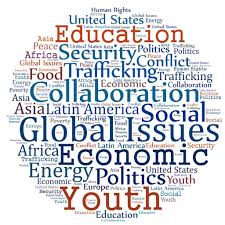Eco-Tourism and Sustainable Travel: Promoting Global Environmental Awareness

Updated at: 2023-08-13 16:24:56 (2 years ago by Melkisedeck Leon Shine)
Eco-Tourism and Sustainable Travel: Promoting Global Environmental Awareness
In today's world, where climate change and environmental degradation have become pressing issues, it is crucial for us to promote global sustainable resources utilization and environment conservation. One powerful way to achieve this is through eco-tourism and sustainable travel. By embracing these practices, we not only get to explore the beauty of our planet but also contribute to its preservation. In this article, we will delve into the importance of eco-tourism and sustainable travel, emphasizing the promotion of global environmental awareness.
-
Preserve natural resources: Eco-tourism encourages travelers to visit pristine destinations with minimal impact on the environment. By doing so, we safeguard the fragile ecosystems and preserve natural resources for future generations.
-
Support local communities: Sustainable travel puts a strong emphasis on supporting local communities. When we choose eco-friendly accommodations and engage in responsible activities, we contribute to the economic development of local communities, ensuring their sustainability.
-
Biodiversity conservation: Through eco-tourism, we have the opportunity to witness and appreciate the incredible biodiversity our planet has to offer. By promoting sustainable travel, we can actively contribute to the conservation of endangered species and their habitats.
-
Cultural exchange: Sustainable travel promotes cultural exchange between travelers and local communities. By immersing ourselves in different cultures, we gain a deeper understanding of the interconnectedness of our world and foster global unity.
-
Reduced carbon footprint: Eco-tourism encourages responsible transportation choices such as walking, biking, or using public transportation. By reducing our carbon footprint, we contribute to mitigating the effects of climate change.
-
Education and awareness: Sustainable travel provides us with valuable opportunities to learn about environmental conservation and the importance of sustainable practices. By sharing our experiences and knowledge, we can inspire others to take similar actions.
-
Engage in eco-friendly activities: When planning our trips, we should seek activities that have minimal impact on the environment. Examples include wildlife observation, hiking, and snorkeling, which allow us to connect with nature while respecting its fragility.
-
Choose eco-friendly accommodations: Many accommodations now prioritize sustainability by implementing energy-saving measures, reducing waste, and supporting local initiatives. By choosing these establishments, we contribute to the preservation of our planet.
-
Support local sustainable initiatives: In many destinations, local communities have developed sustainable initiatives such as organic farming, renewable energy projects, and waste management systems. By supporting these initiatives, we become active participants in the promotion of global sustainable development.
-
Responsible waste management: Responsible travelers should always dispose of their waste properly and minimize their production of single-use plastics. By doing so, we reduce pollution and protect marine life and land ecosystems.
-
Volunteer for environmental projects: Consider volunteering for organizations or projects that focus on environmental conservation during your travels. This hands-on experience allows you to actively contribute to the preservation of our planet.
-
Spread the word: Share your eco-travel experiences with friends, family, and on social media platforms. By spreading the word about sustainable travel, you inspire others to make conscious choices and promote global environmental awareness.
-
Continuous learning: Keep educating yourself about sustainable practices and new initiatives in eco-tourism. Attend workshops, read books, and engage in discussions to continually improve your knowledge and skills.
-
Encourage policy change: Advocate for policy changes that support eco-tourism and sustainable travel on a global scale. Engage with local and international organizations to push for regulations that promote environmental conservation.
-
Take action today: Every small step counts. Start by assessing your own travel habits and making conscious choices. By taking action today, you become part of the solution and contribute to the promotion of global sustainable resources utilization and environment conservation.
In conclusion, eco-tourism and sustainable travel are powerful tools to promote global environmental awareness. By embracing these practices, we can preserve natural resources, support local communities, and foster global unity. It is possible for each and every one of us to make a difference. Will you join the movement?
Do you have any travel experiences that have inspired you to be more conscious of the environment? Share your stories in the comments below and let's inspire others to embark on sustainable journeys! Don't forget to share this article with your friends and family using the hashtags #EcoTourism #SustainableTravel #GlobalConservation.




